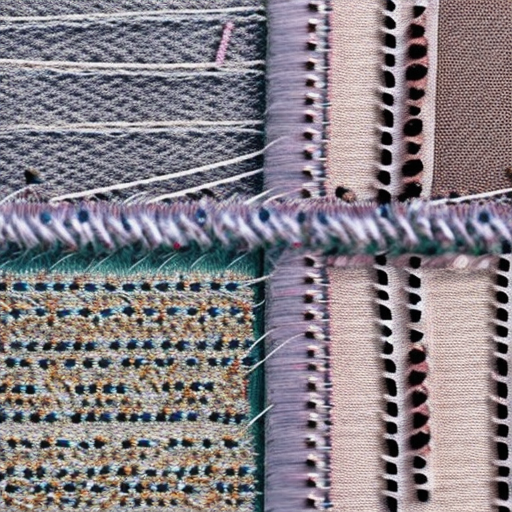Straight Stitch
The straight stitch is the most basic and commonly used stitch in sewing. It is formed by sewing through the fabric in a straight line using one forward motion of the needle and thread.
Example:

Zigzag Stitch
The zigzag stitch is versatile and commonly used for finishing fabric edges, appliqué, and decorative stitching. It is created by sewing back and forth in a zigzag pattern, covering more width than a straight stitch.
Example:

Overlock Stitch
The overlock stitch, also known as a serger stitch, is used to create secure seams, prevent fraying, and give a professional finish to garments. It trims the fabric edge while sewing and stitches over it simultaneously.
Example:

Blind Hem Stitch
The blind hem stitch is used for invisible stitching on hems. It creates tiny, nearly invisible stitches on one side of the fabric, while catching only a few threads on the opposite side.
Example:

Buttonhole Stitch
The buttonhole stitch is used to create openings for buttons on clothing or other fabric items. It involves several close and tight stitches forming a rectangle or keyhole shape to reinforce the fabric around the buttonhole.
Example:

These are just a few examples of the numerous stitches available for various sewing projects. The choice of stitch depends on the desired outcome, fabric type, and sewing machine used. mastering different stitches will enhance your sewing skills and allow you to tackle a wide range of sewing projects with confidence.




